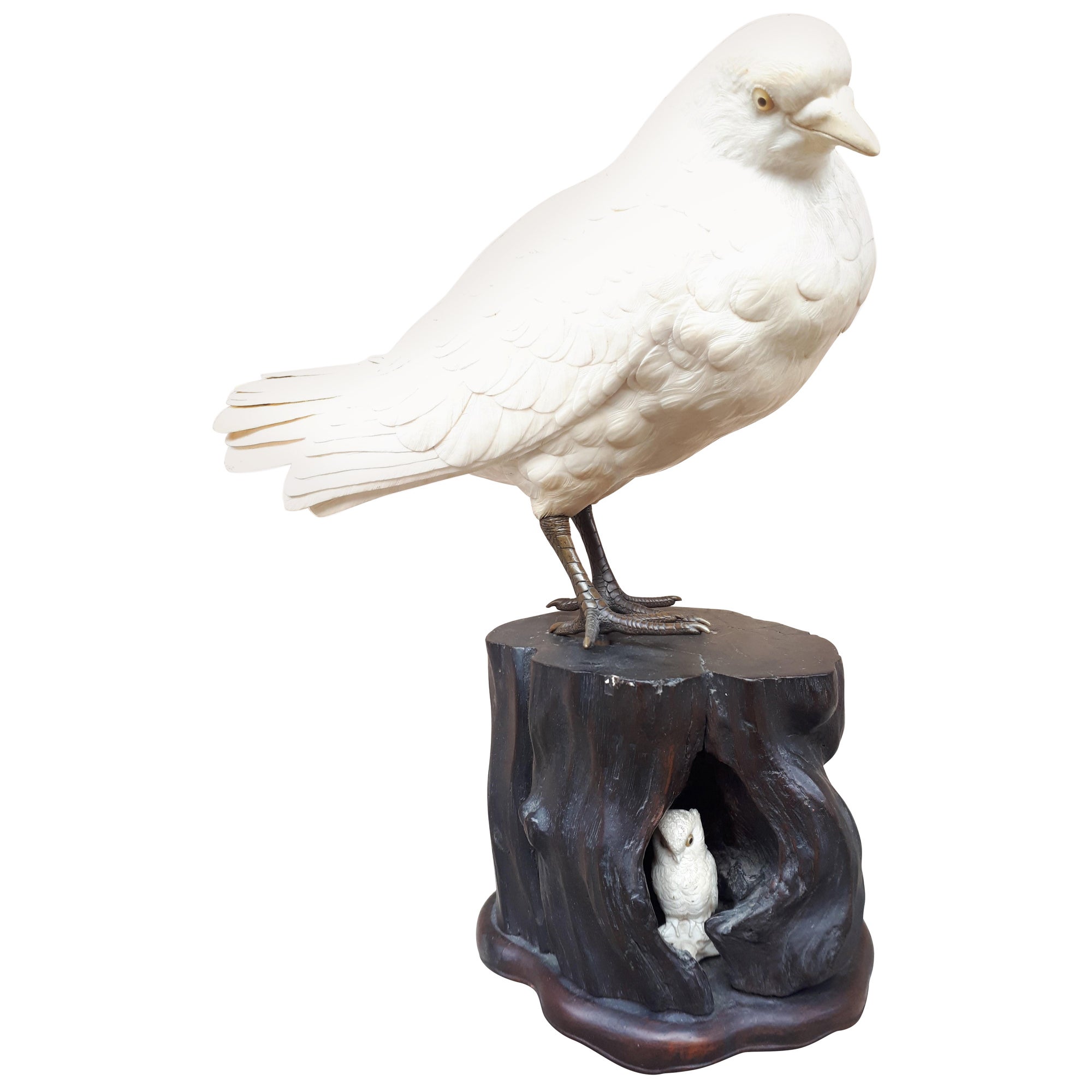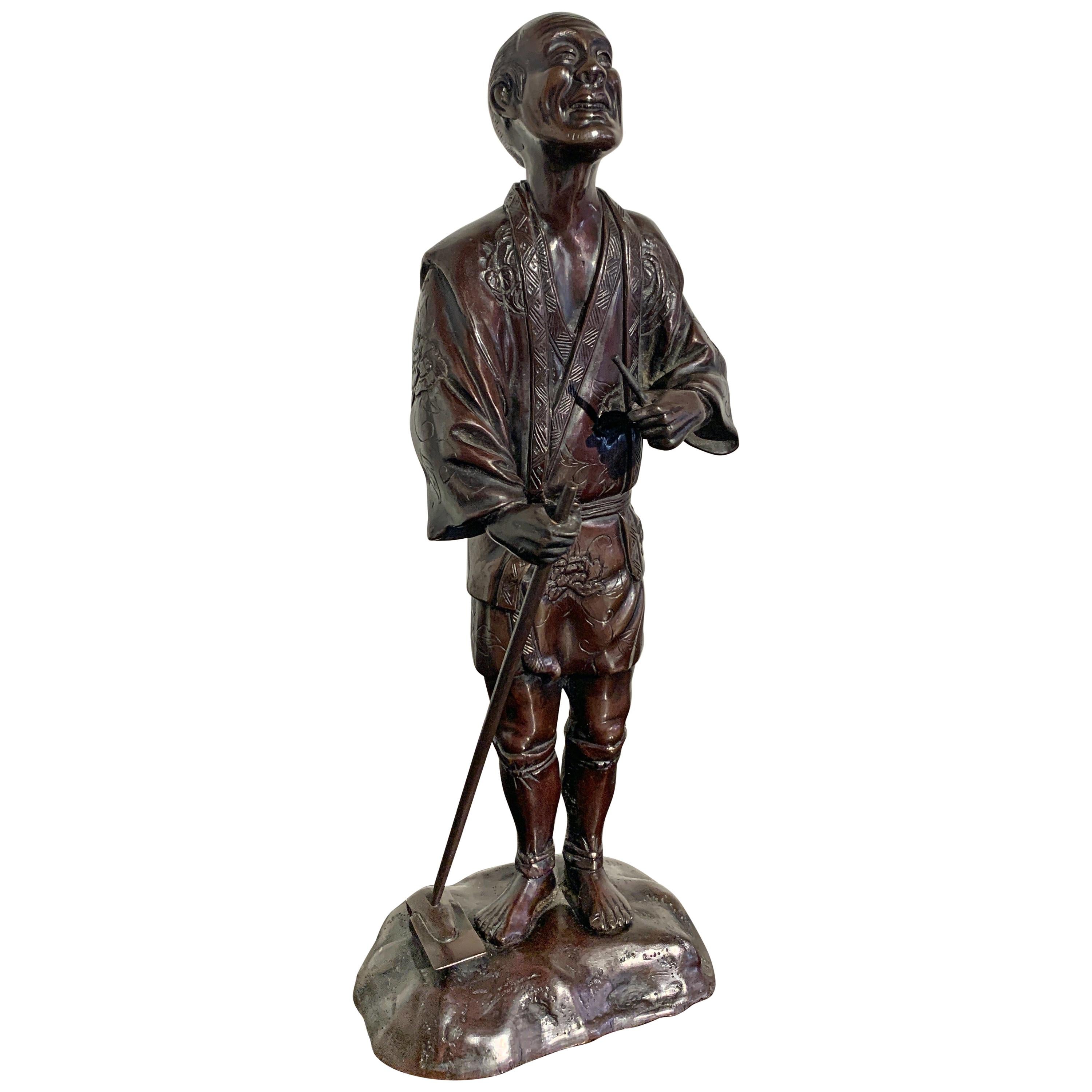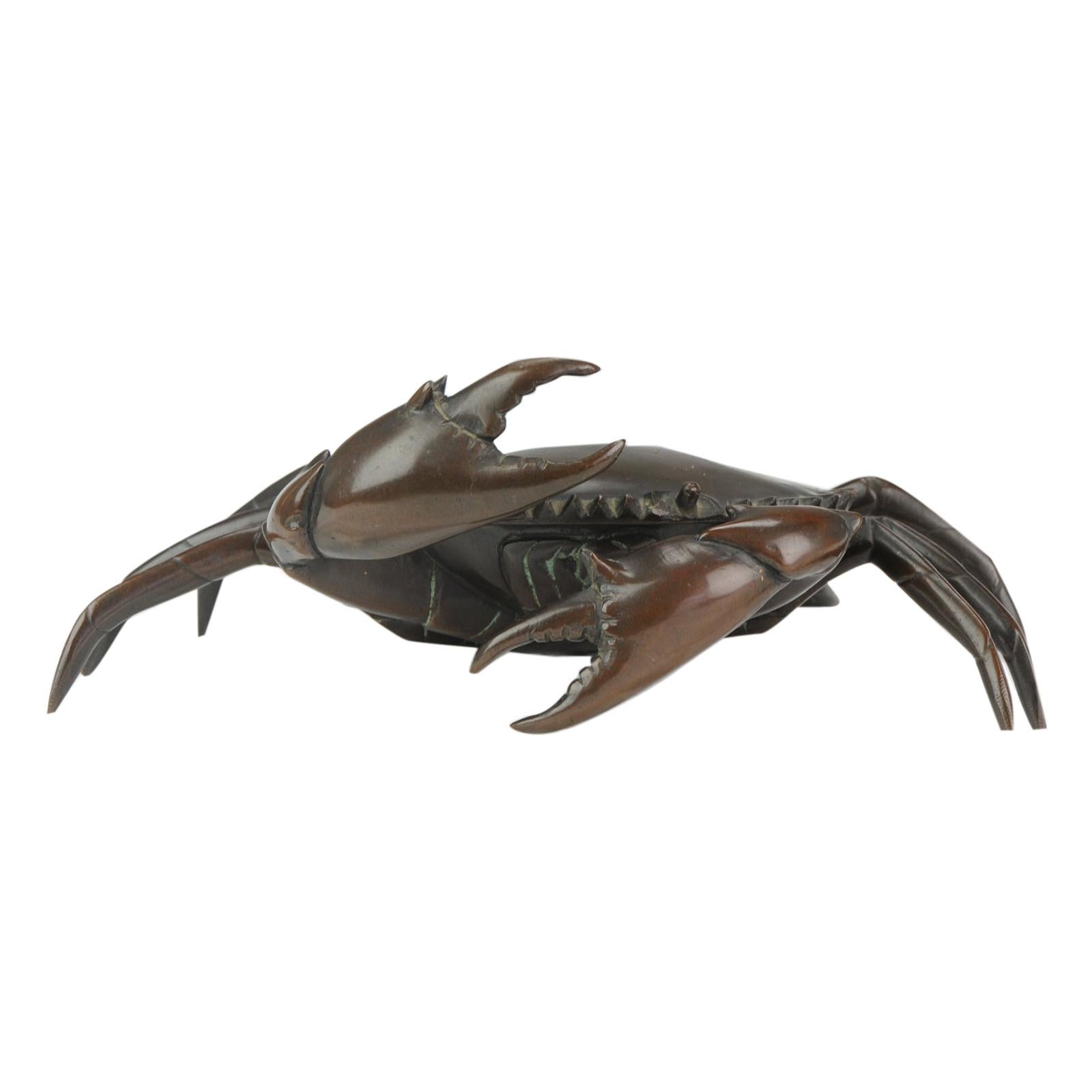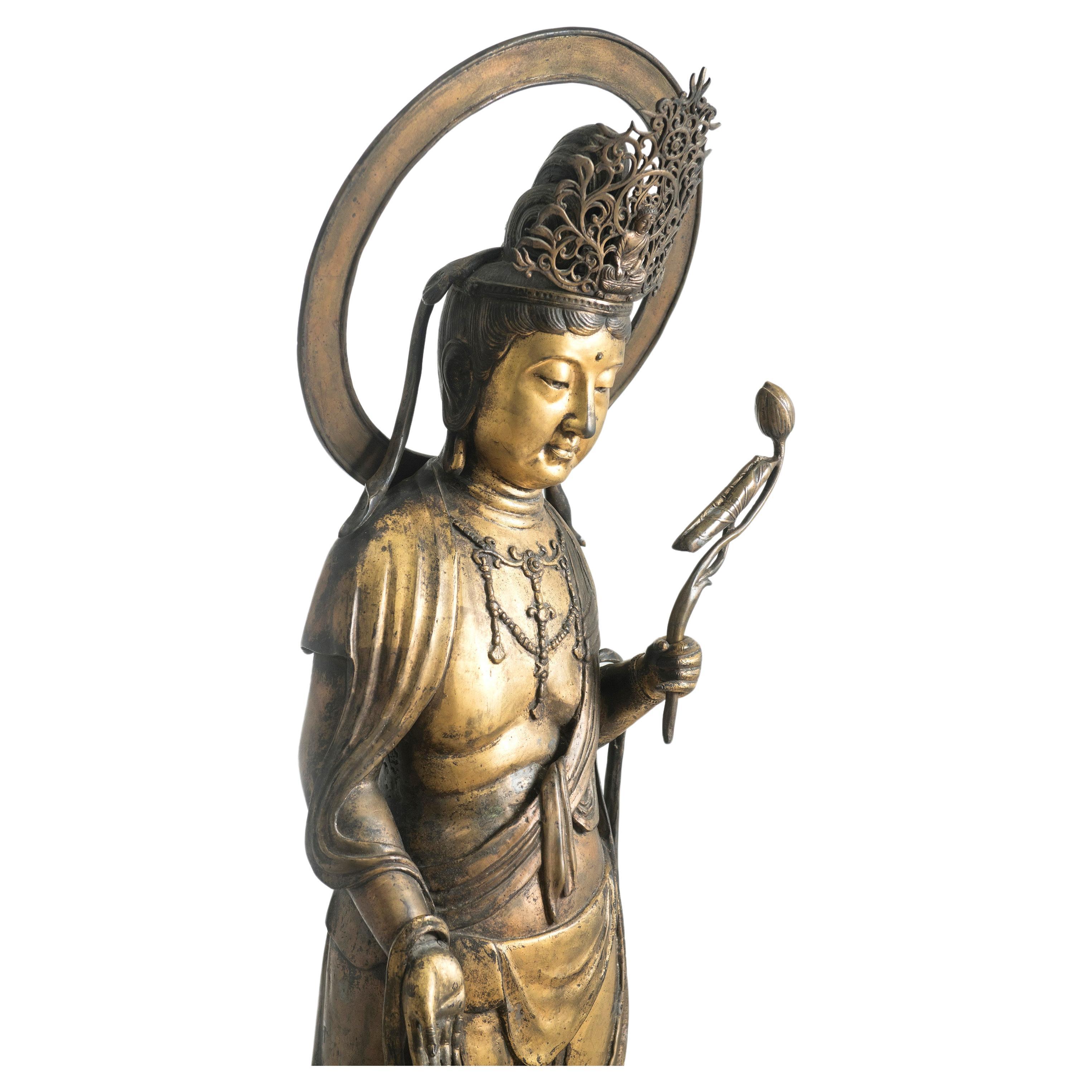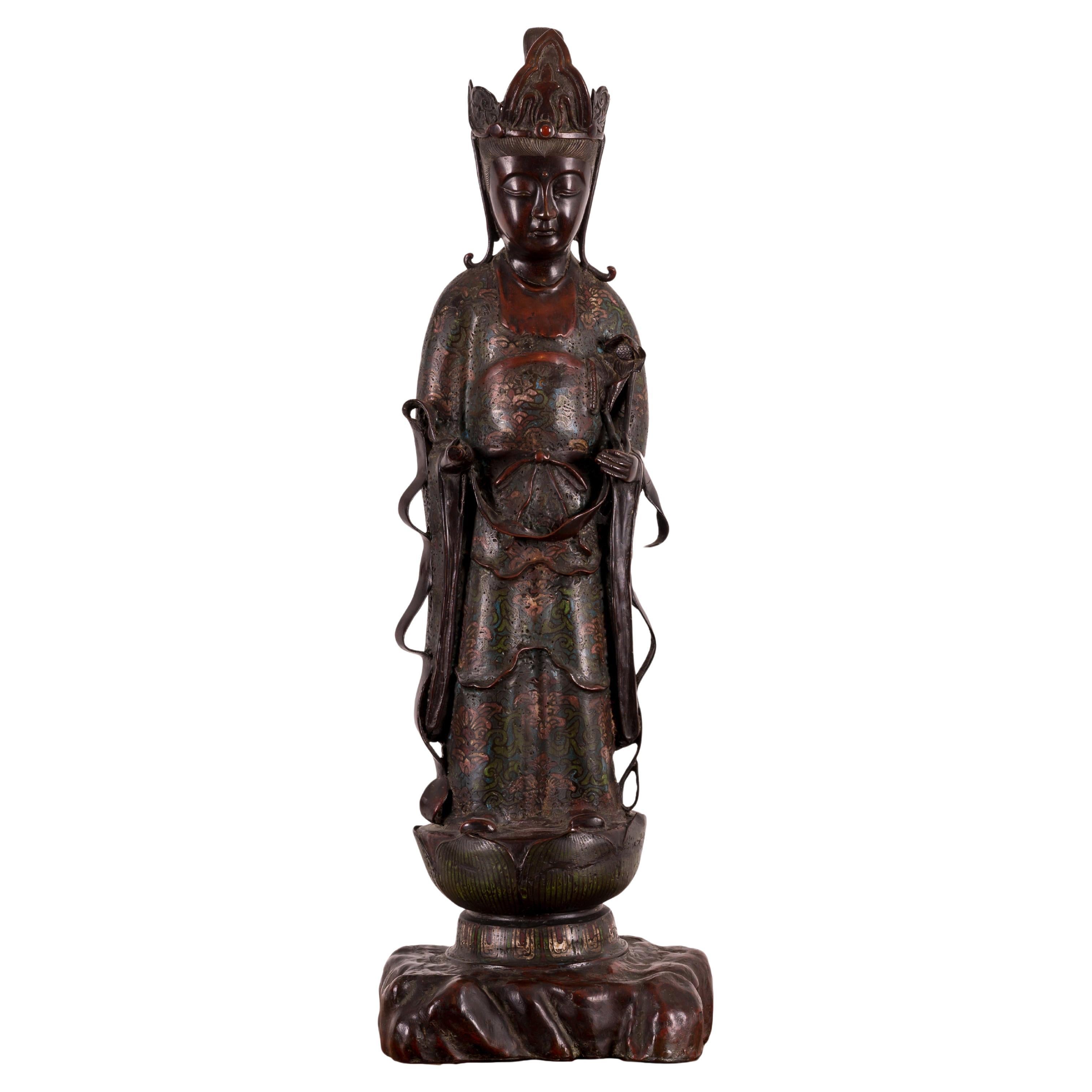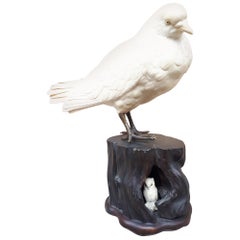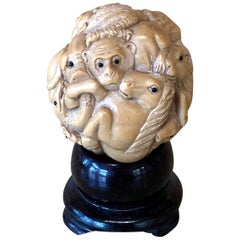
Japanese Carved Buddha Okimono Figure Meiji
View Similar Items
1 of 5
Japanese Carved Buddha Okimono Figure Meiji
About the Item
- Dimensions:Height: 2.37 in (6 cm)Width: 1.78 in (4.5 cm)Depth: 1.78 in (4.5 cm)
- Materials and Techniques:
- Period:
- Date of Manufacture:19th century
- Condition:Wear consistent with age and use.
- Seller Location:Nottingham, GB
- Reference Number:1stDibs: LU9003236459692
You May Also Like
- Japanese Meiji Period Carved Wood Okimono Man with RabbitsLocated in Newark, EnglandThe charming figure, carved from a single piece of wood is exceptionally carved showing the male figure with humorous expression holding two Rabbits one by the ears and the second under his arm. A third Rabbit stands at the feet of the male looking up, each rabbit with a different expression. The male figure is wearing traditional Japanese attire with his hair tied back stood upon a naturalistic base. The figure dates to the Meiji Period (1868-1912) circa 1900. Notes The Rabbit is one of the 12 animals to feature in the Japanese Zodiac signs which follows the Chinese astrological system along with the Rat, Ox, Tiger, Rabbit, Dragon, Snake, Horse, Goat, Monkey, Rooster, Dog, Pig. Such division is connected with the Jupiter cycle around the Sun, which lasts about 12 years. As 2023 is the year of the Rabbit...Category
Antique Early 1900s Japanese Meiji Sculptures and Carvings
MaterialsWood
- Ivory Okimono by Kofu, Japan Meiji eraLocated in Saverne, Grand EstRare okimono carved in the thickness of an elephant tusk depicting a life-size pigeon. It stands on a hollow trunk, inside which hides an owl. A small 4mm...Category
Antique 1880s Japanese Meiji Sculptures and Carvings
MaterialsIvory
- Finely Carved Japanese Okimono on StandLocated in Atlanta, GAAn antique Okimono (Japanese means artsy display ornament object) displayed on a small custom wood stand from Meiji Period circa early 2oth century. T...Category
Early 20th Century Japanese Japonisme Sculptures and Carvings
MaterialsWood
- Japan 1890 Meiji Period Rare Carved Okimono Of A Father And Son Playing SignedLocated in Miami, FLJapanese Okimono sculpture of a father and son. Very rare and highly detailed sculpture, created during the meiji period (1868-1912) in the imperial Japan, circa 1890. This sculptural Okimono is very well realized and exceptionally proportionate. Show the figures of a father and a son playing, with happiness and smiling. The father hold a big basket at his back and both personages are wearing kimonos richly engraved. This piece was made from a carving with exceptional craftsmanship and intricate details. This sculpture stand itself on his own base and have all retain of the applied ochre ink accents. Measures: 130 mm by 45 mm by 53.3 mm (5.1 x 1.75 x 2.1 inches). Weight: 81.30 grams. Note: This kind of family scene is very rare to seen in nineteenth century japanese iconography. Okimono Is a Japanese term meaning for display an ornament; art object; or decorative object, usually displayed in a tokonoma or butsudan "Buddhist altar". It is an ornament or figure, especially one placed in a guest room. An okimono may be a small Japanese carving, similar to but larger than a netsuke. Unlike the netsuke, which had a specific purpose, the okimono is exclusively decorative and was displayed in the tokonoma. During the Meiji period, many okimonos were made for export to the West. Meiji Period This is an era of Japanese history that extended from October 23, 1868 to July 30, 1912.The Meiji era was the first half of the Empire of Japan, when the Japanese people moved from being an isolated feudal society at risk of colonization by Western powers to the new paradigm of a modern, industrialized nation state and emergent great power, influenced by Western scientific, technological, philosophical, political, legal, and aesthetic ideas. As a result of such wholesale adoption of radically different ideas, the changes to Japan were profound, and affected its social structure, internal politics, economy, military, and foreign relations...Category
Antique 1890s Japanese Meiji Sculptures and Carvings
MaterialsWood, Paint
- Okimono - Bronze Sculpture By Kakuha Kanzaemon, Japan Meiji EraLocated in Saverne, Grand EstSuperb bronze okimono with black patina representing a peasant resting after his work, a basket of vegetables at his feet. Signed Kakuha Sei on the wooden stump. Excellent quality ! ...Category
Antique Late 19th Century Japanese Meiji Sculptures and Carvings
MaterialsBronze
- Japanese Tokyo School Bronze Okimono of a Farmer, Meiji PeriodLocated in Austin, TXA very fine and detailed Tokyo School cast bronze okimono (decorative sculpture) of a smiling farmer, Meiji period, late 19th century, Japan. The e...Category
Antique Late 19th Century Japanese Meiji Sculptures and Carvings
MaterialsBronze
Recently Viewed
View AllMore Ways To Browse
Asian Bone Figure
Bone Buddha
Mid Century Japanese Bronze
Japanese Iron Garden
Midcentury Censer
Koi Carving
Maneki Neko Cat
Antique Thai Sword
Chinese Jade Bonsai Tree
Chinese Soap Stone Carvings
Fukagawa Seiji
Indonesian Bronze Statues
Kwan Yin Wooden Sculptures
Maneki Neko
Quan Yin With Flower
Quan Yin With Lotus Flower
Vintage Chinese Cork Carving
Vintage Jade Bonsai

